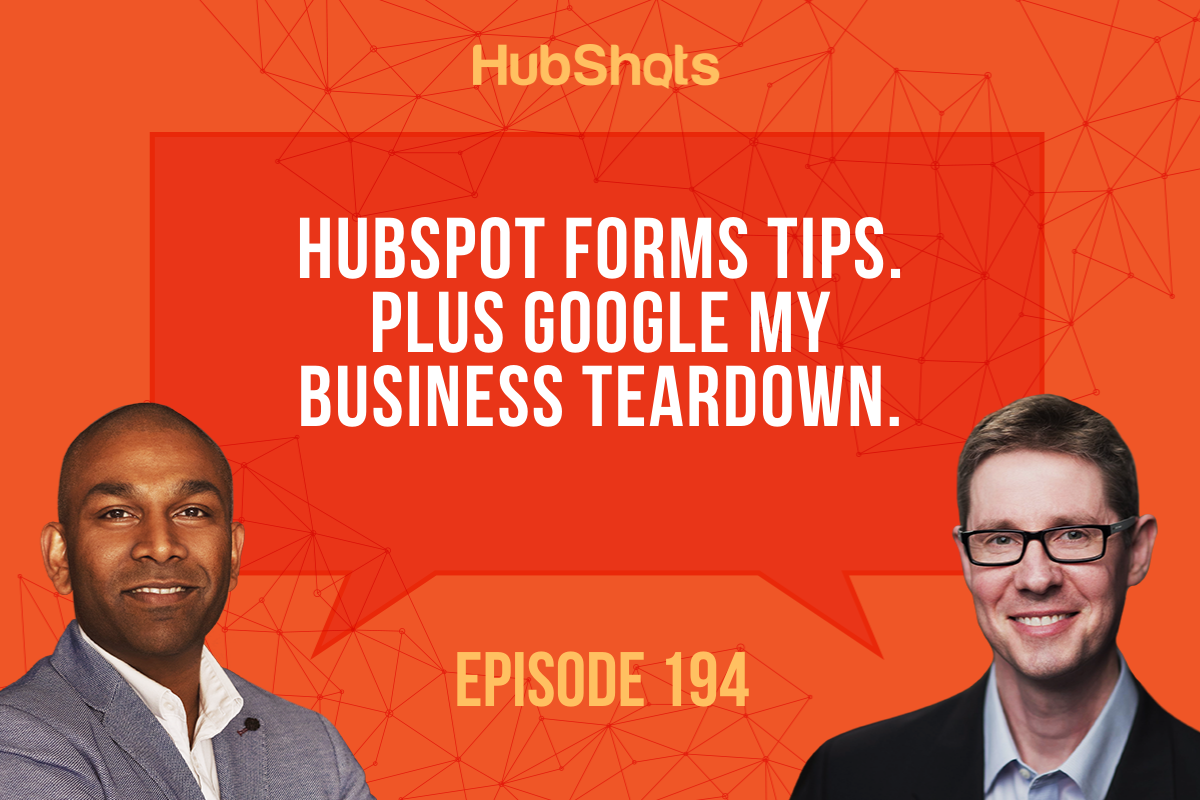Episode 300: 7 Years of HubSpot Tips
Welcome to HubShots Episode 300: 7 Years of HubSpot Tips This edition we dive into: 7 years and 300 episodes HubSpot Email List columns layout ...
This episode we chat about HubSpot Forms, Sales Qualified Leads, plus tips for improving your Google My Business listing.
Listen to the track here: https://soundcloud.com/hubshots/194-hubspot-forms-tips-plus-google-mybusiness-teardown
HubShots - APAC's number 1 HubSpot focussed podcast - where we discuss HubSpot tips & tricks, new features, and strategies for growing your marketing results.
HubShots, the podcast for marketing managers and sales professionals who use HubSpot, hosted by Ian Jacob from Search & Be Found and Craig Bailey from XEN Systems.
Subscribe to our YouTube channel here: https://www.youtube.com/channel/UCD3Uo4X-IxPJLE8ygPDQhNQ
Subscribe to our Spotify channel here: https://open.spotify.com/show/7oee8w41riN5aRNrLKT2ar
Join the Facebook group here: https://www.facebook.com/groups/hubshots/
Follow us on Twitter here: https://twitter.com/hubshots
Follow us on Instagram here: https://www.instagram.com/hubshotspodcast/
Follow us on LinkedIn here: https://www.linkedin.com/company/hubshots/
Recorded: Thursday 12 March 2020 | Published: Friday 27 March 2020
Connect with Ian on LinkedIn here: https://www.linkedin.com/in/ianjacobau/
Connect with Craig on LinkedIn here: https://www.linkedin.com/in/craigbailey/
Sydney HubSpot User Group feedback from last week - TikTok virus thanks to Moby
Inbound 2020 you can register RISK-FREE. Their refund policy has been extended through June 1st.
A client kept referring to the Spam Monkey tool they were using. Took us a little while to realise they were talking about MailChimp.
Really useful reports for showing form results.
Especially how you can compare the number of people who interacted with a form, through to submitting ie you can see if people drop off after starting to fill out a form:
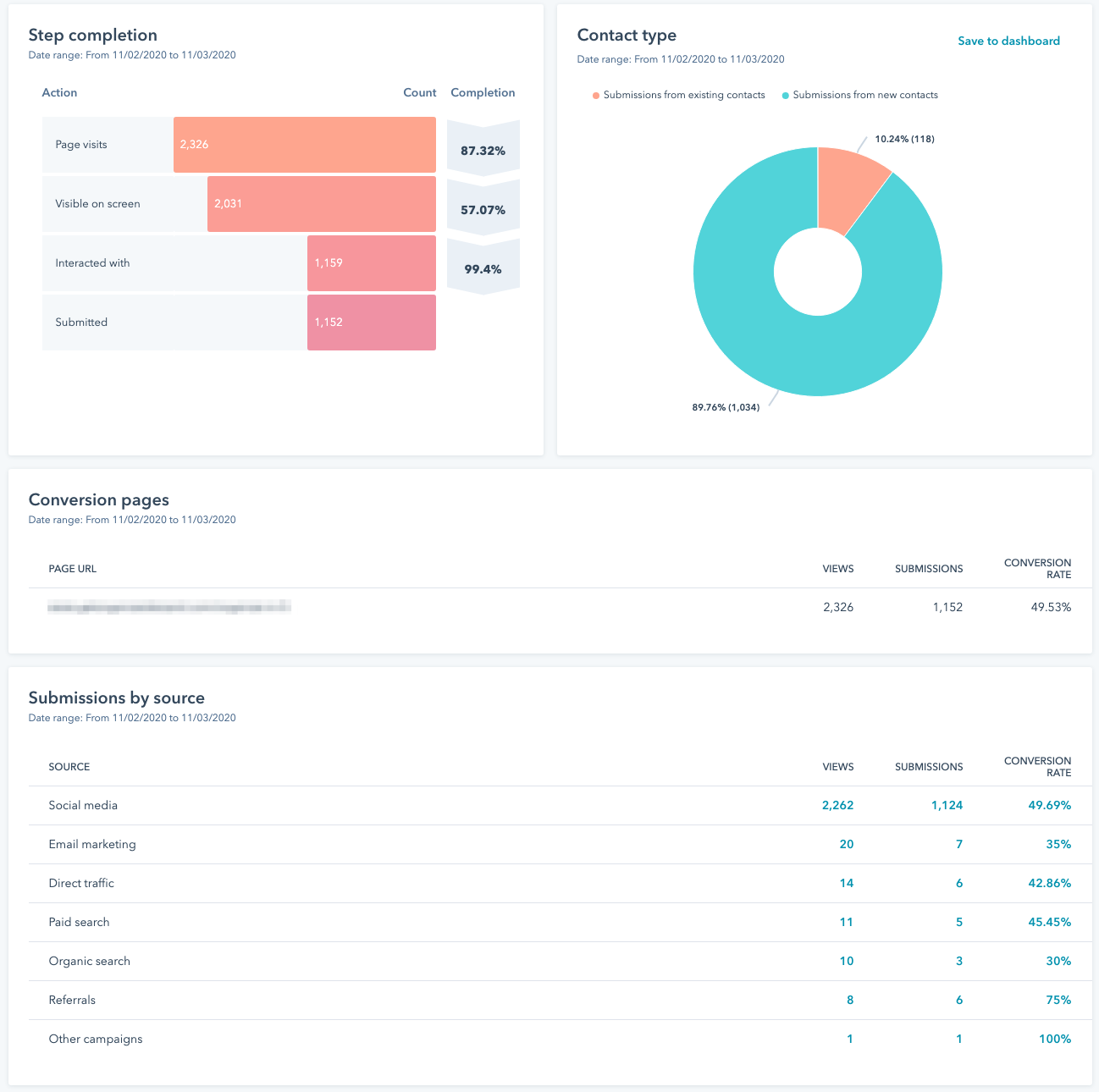
Love it when we see things like this in our general exploration of the tool!
We’ve covered this a few times previously but it is always useful to review.
One key item to consider though: often clients will have a different view of what a Sales Qualified Lead (SQL) is.
This is best resolved by reviewing the internal sales processes, possibly optimising, and then fitting to the lifecycle stages.
HubSpot Progressive form fields versus Dependent form fields
https://knowledge.hubspot.com/forms/use-dependent-form-fields
https://knowledge.hubspot.com/forms/use-progressive-fields-in-forms
Example of Dependent form fields: After filling in the Country field it shows a State field.
Example of Progressive form fields: If a visitor has previously filled in their Company name, next time they are shown the form it might show a Company Size field.
Using a form for check-ins at a trade show
What to do if you accidentally have a contact record updated multiple times - go to the Form and export out the submission details.
In future, make sure you turn this Form settings option on:

Your free Business Profile on Google helps your business show up when it matters most: the moment customers are searching for your business or products or services like yours on Google Search and Maps.
Your free Business Profile on Google My Business helps you drive customer engagement with local customers across Google Search and Maps.
Some interesting stats:
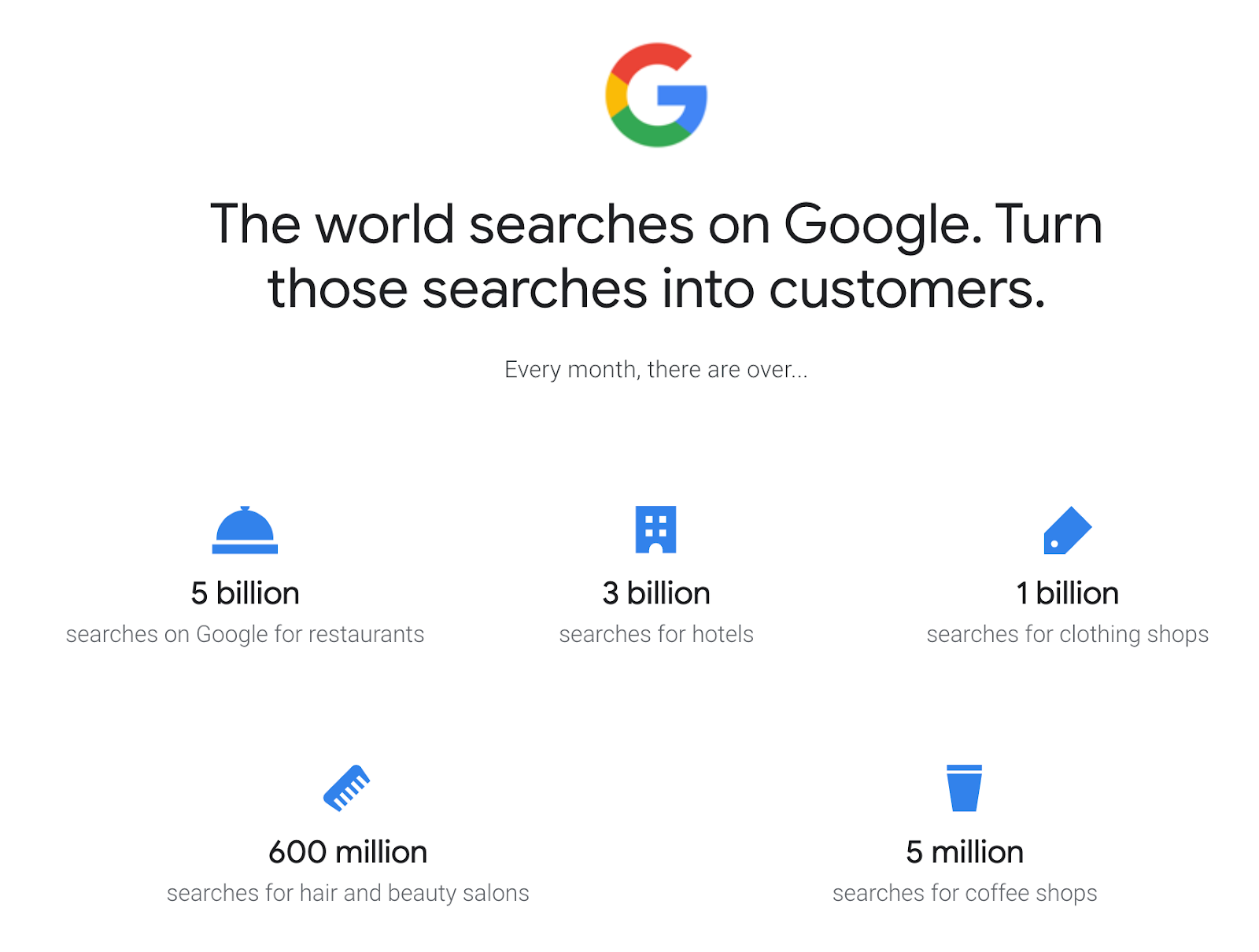
You can build your first website for free on Google!
They will help you create a beautiful website to engage new customers – and establish your business online.
Their statistic about a professional website driving sales: Nearly 70% of consumers agree that they are more likely to buy from a business that has a website over one that does not.
Google MyBusiness Community > https://support.google.com/business/community?hl=en
Actions:
Follow your plan:
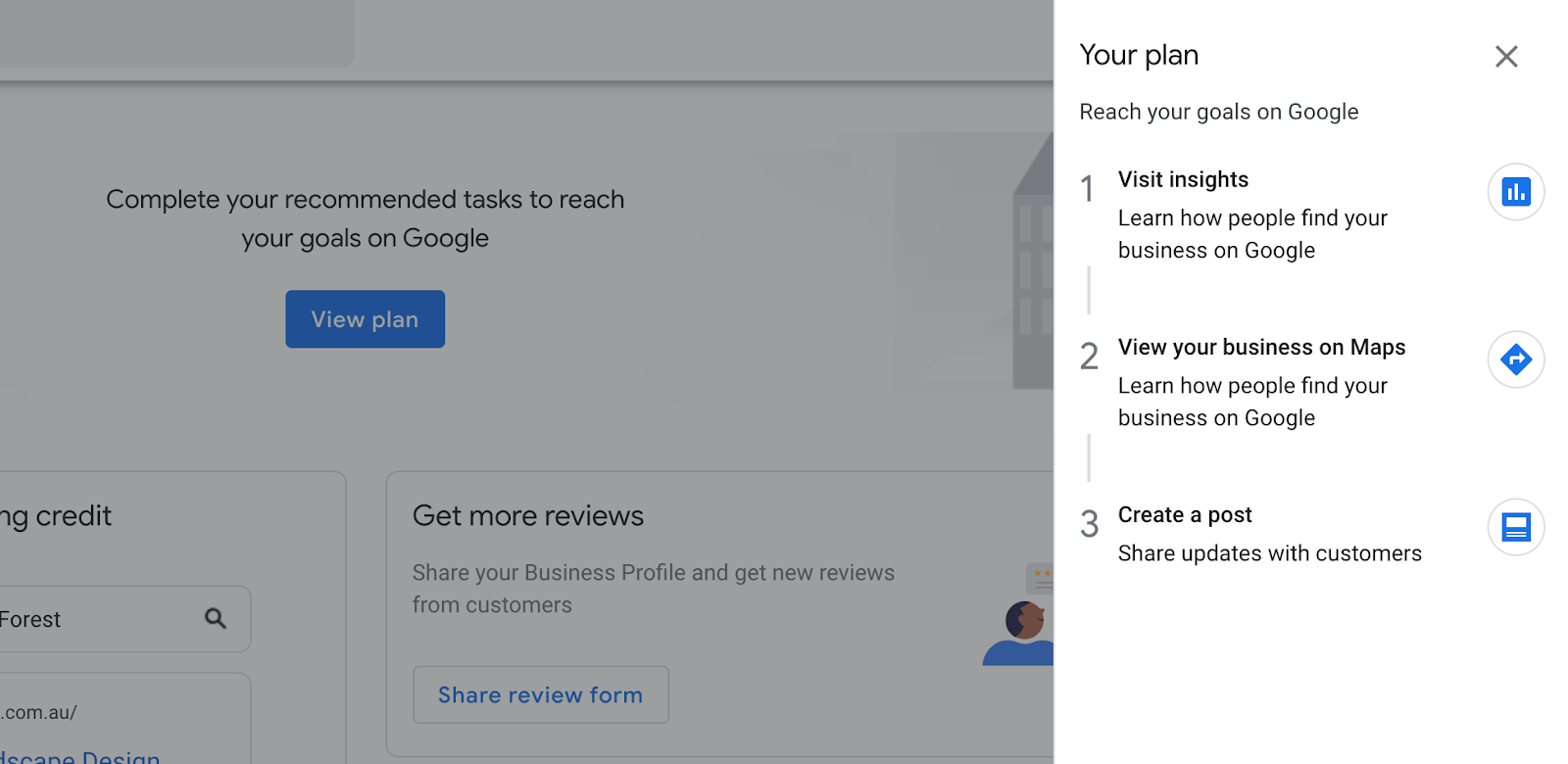
Share your link to get more reviews: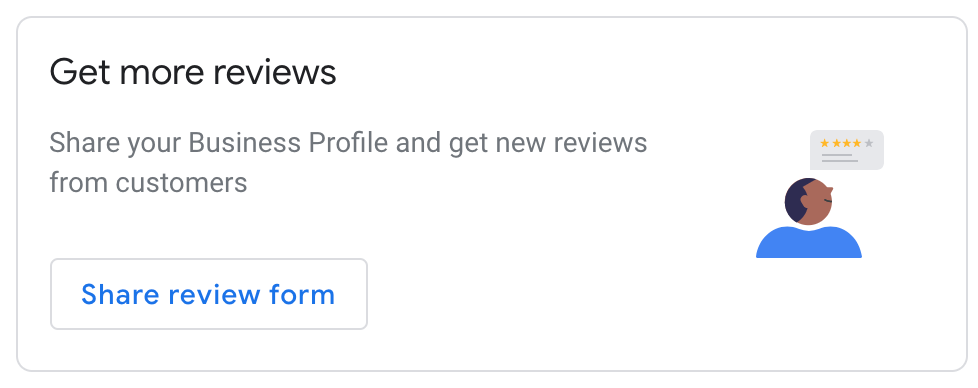
Review your performance weekly:
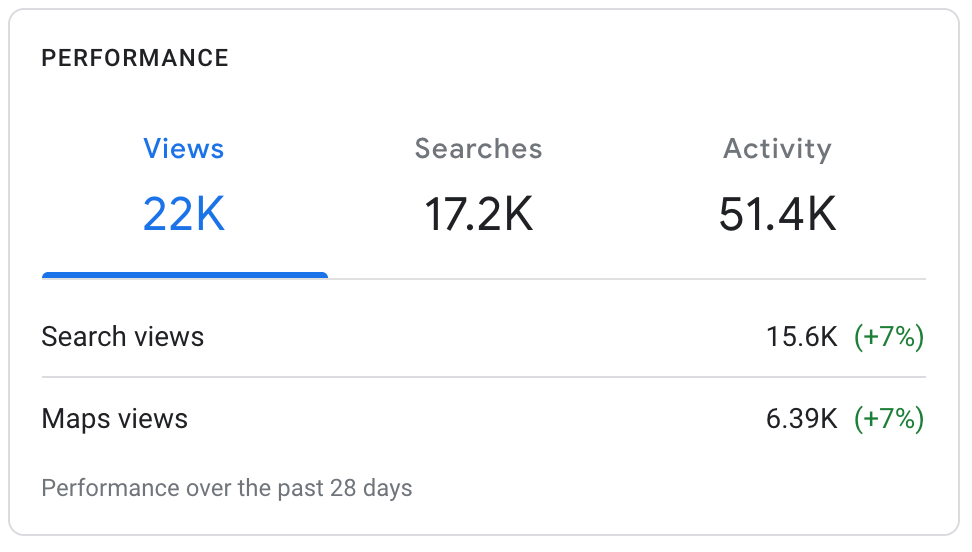
Insights show you how you can optimise your customer engagement for better results, and you can encourage more engagement by interacting with your customers from the Customers tab.
Have a look at insights:
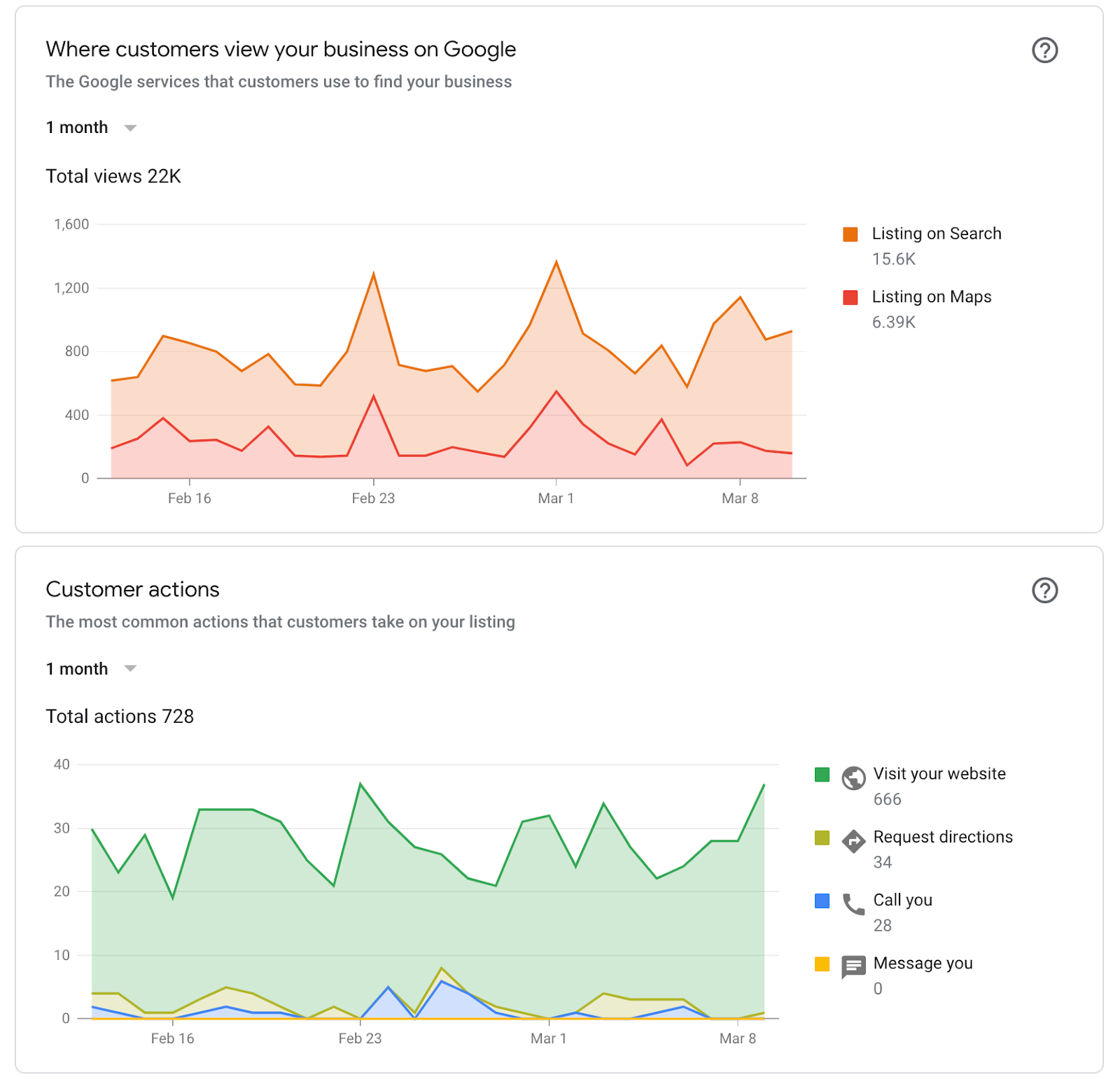
One insight that was particularly interesting was the direction requests that would give insight into where people are visiting you from:
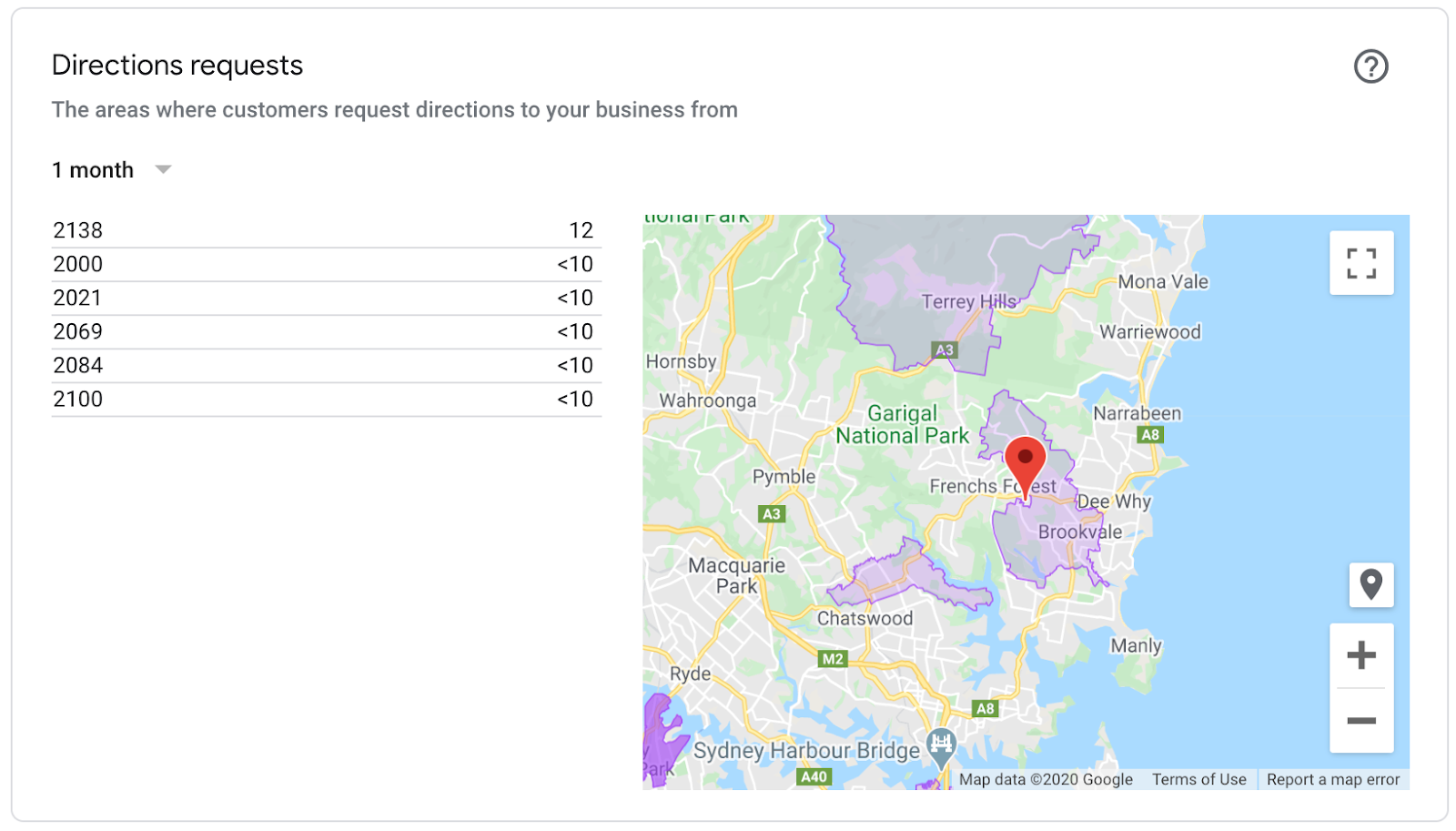
Insights help > https://support.google.com/business/answer/7689763?hl=en#how
Good marketing = Finding the pain and providing a solution
Bad marketing = Creating unnecessary pain and providing a ‘solution’
Examples:
Be ‘good marketers’.
Social media stats pulled in to HubSpot (even if they weren’t posted from HubSpot):
HubSpot’s Not Another State of Marketing Report:
https://www.hubspot.com/state-of-marketing
In particular, so you can check out the new form format they are testing:
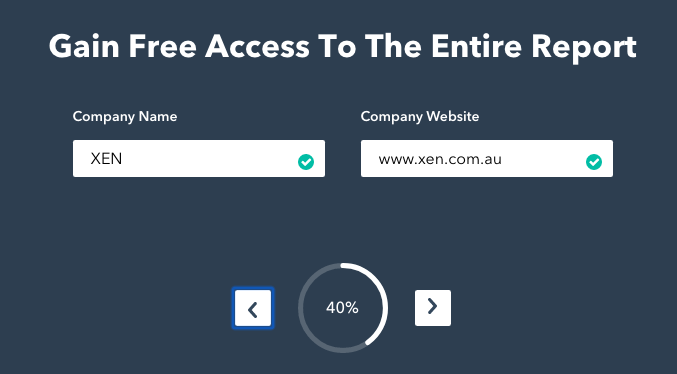
“To refer to a personal taste of mine, I’m going to buy hamburgers the rest of my life. When hamburgers go down in price, we sing the ‘Hallelujah Chorus’ in the Buffett household. When hamburgers go up in price, we weep. For most people, it’s the same with everything in life they will be buying — except stocks. When stocks go down and you can get more for your money, people don’t like them anymore.”
https://conversationalist.org/2020/03/05/the-prodigal-techbro/
https://www.siegemedia.com/creation/content-strategy-2020
Please rate and leave us some feedback as this helps us improve and reach more marketers.
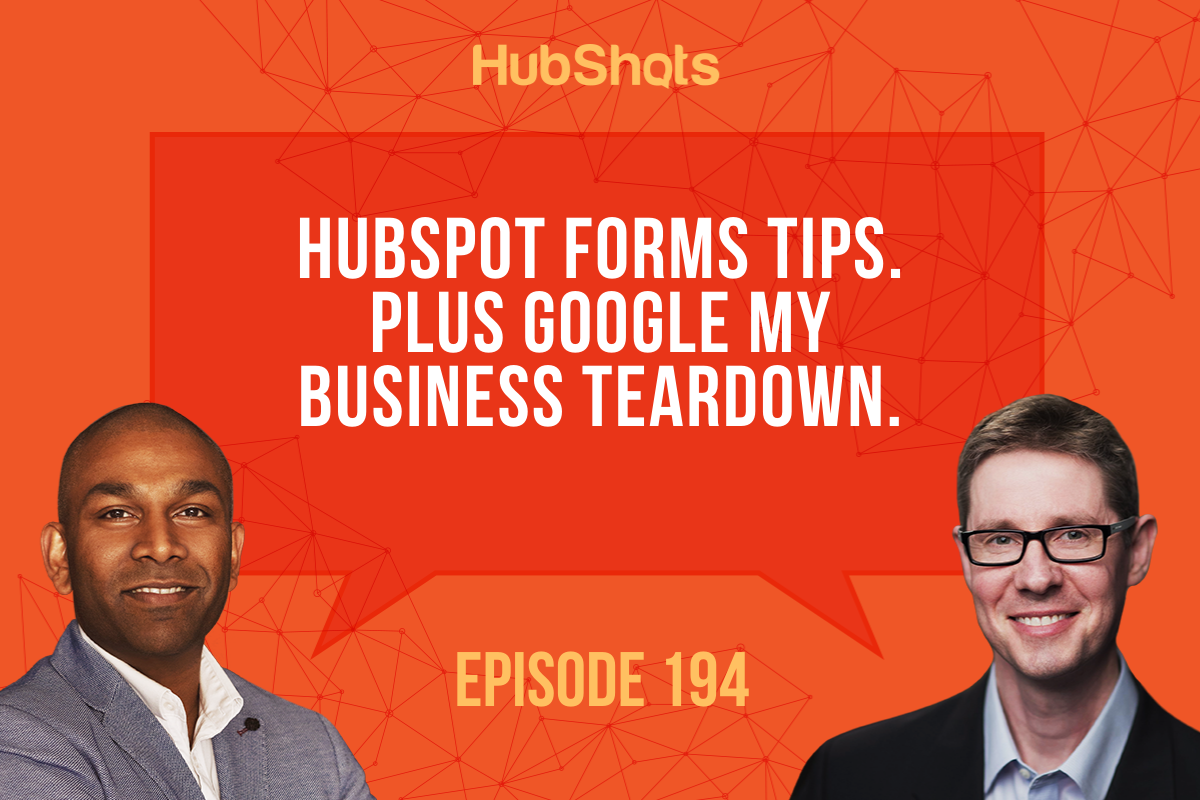
- Hi everyone. Welcome to HubShots episode 194. In this episode, we chat about HubSpot forms, sales qualified leads, plus tips for improving your Google My Business listing. You're listening to Asia Pacific's number one HubSpot focused podcast where we discuss HubSpot's tips, tricks, features, and strategies for growing your sales and marking results. My name is Ian Jacob from Search & Be Found, and with me is Craig Bailey from XEN Systems. How are you, Craig?
- I'm happy and healthy, and happy to be so.
- That's right, and this episode is proudly brought to you by Tesla, and we're looking forward to driving the new Tesla Cybertruck, aren't we, Craig?
- We are.
- Now what's our growth over the week, Craig?
- The HubSpot user group in Sydney was on last week.
- Yes.
- And thanks to Moby, Tash, and Tony for organizing an excellent event.
- The Super HUG.
- The Super HUG, they had over 350 people registered, and more than 100 people turn out on the night, and by the way, this was a rainy night in Sydney.
- That's right.
- And of course, as people listening now would know, the coronavirus panic is in full swing. So I thought it was a very good turn out, and it was a very good event. However, I have a real bugbear.
- What virus have you caught, Craig?
- I've caught the TikTok virus because Moby did a whole session on TikTok at the user group, and I was like, oh what's this? Oh I keep hearing about TikTok, no I'm gonna avoid it. 'Cause you know I'm now not on Facebook. I'm very rarely on Instagram. I'm not on Twitter. I'm very rarely on LinkedIn, right? I'm just trying to avoid distractions, okay? So then I thought, oh TikTok, oh look, I'll check it out. So I installed it, and I sent you screenshots of my usage. Oh my goodness, I'm spending hours on this stupid damn network, watching silly dance videos, and oh my goodness.
- And dogs.
- And dogs, cute dogs and puppies, and oh my goodness.
- You've been sucked into that, haven't you, Craig?
- I've been sucked in the TikTok vortex, and Moby, you have a lot to answer for.
- That's right.
- I blame Moby.
- Now, inbound 2020, Craig, is not that far away. We're talking about mid August.
- Well that's right, and well speaking of coronavirus fears, for people who are wary of registering for an event that may not proceed, and they might think, well why would I register? You know, I'll wait and see. So you, you were showing me this earlier that HubSpot's actually covered this, haven't they?
- That's right. So they say you can register risk-free, and they're enlisting their full refund policy till the 1st of June, where you can get 100% refund. Any time after that, I think it's 50%. But it's interesting. So they're giving people the opportunity to actually do that and have the ability to get a refund in this very uncertain time that we're living in.
- Yeah, well and I just think it's a smart move, right? Because you must say, well why would I bother? It's like no, well lock it in, get your ticket.
- Get the special pricing.
- The early bird pricing. And just know that it is just free. If circumstances changes and the event can't go ahead, still, 'cause coronavirus spreads further, then yeah you get your money back. So I think it's a good move, and yeah, take advantage of it if you're intending to go.
- That's right. Now I want to just say thank you to everyone who's connected with us on LinkedIn. Thank you to Justin who just connected with us and sent us some lovely words. And I'd just encourage you to keep connecting with us and send us a note. We'd love to hear from you guys, and you know what I'm finding that's interesting? There are a few people that have connected with us, that don't live that far away from us, and we've actually met them for coffee. We're gonna meet someone for coffee. So there you go.
- It's a small world after all.
- That's right.
- Craig, you know I'm changing the subject entirely. One of my customers, you know they were referring to this new tool they're using called Spam Monkey?
- Yeah, I haven't heard of Spam Monkey.
- Yeah, so I'm going, what is this tool? They go, oh yeah Spam Monkey, we've just loaded up the automation sequence, it's working a treat. I'm going, what's Spam Monkey? They're talking about Mailchimp! Finally worked it out, oh Mailchimp. And they weren't saying it as a joke, they were just calling it Spam Monkey. I dunno. Anyway.
- Mad branding going on there.
- Could be a branding opportunity right there.
- Have you got the domain spammonkey.com Craig?
- I haven't. I better jump on right on that.
- All right, onto our HubSpot marketing pitch of the week, Craig, and this is some really useful reports to do with forms. Now, I only discovered this recently because I was creating some new forms, and I went, oh hang on, I can see some new things here, and it's really interesting. It's got the, what looks like a funnel report, which says about step completion, so it talks about the page visits, the visits that actually saw the form, and then the people that completed the form, and then the people that submitted the form. Or so, interacted and then submitted it. So some great analytics there just to understand what is going on. The other one is, is it a new contact, or is it existing contacts? That's got a nice little pie chart there. And the next thing, which I think we spoke about before is, if you've got the former multiple pages is actually understanding which pages have the form? What were the view submissions and the conversion rate? Another great one. And then the last one is the submissions by source for that form. Really fantastic analytics to really understand what is going on with your forms.
- This was really good, and especially the one you mentioned at the start, the step completion. Sure you can see the conversion rate in terms of, how many people visited the page it was on, versus submitting the form. But to see how many people started the form versus how many completed it, i.e. who interacted with it versus actually completed the submission, that's really powerful.
- You know one thing I did like? The visit, the part where it says visible on screen. So for example, if your form is right at the bottom of the page, that is not visible on the screen until people get to it. So it's a really good indication to go, well are people actually getting to that form if it is buried right at the bottom? Maybe you get rid of it. Maybe do a slide in form, as you scroll down the page for that to slide in. So just a different kind of form might make all the difference in this scenario.
- That's really good. You know I wanted to say, here's what I really love about catching up with you each week, Ian. Because that particular, and we've got a screenshot in the show notes by the way of a form, showing this interactions versus submissions. Every week, you know, we get together, we're planning out the show, and you'll say, oh, have you seen this? And I'll look over and I'll go, no. Oh cool. And I'll sometimes do the same to you. I love those moments when you go, oh cool. That's something new. And you know, this is, oh, this is the part of the joy of SaaS software, isn't it?
- That's right. There's always a new feature coming out. And if you rely on that little orange notification bell up the top right, you miss half the stuff. They're the highlights of the key big things.
- Exactly.
- But these little things. I don't know. There are some people nodding along with us on this show going, oh yes, those little things, I love that. And then there's other people going, what are these guys talking about, about some tiny little graph on a report? We don't care. I mean, I love these little things.
- All right Craig, onto our HubSpot sales pitch of the week, and we wanted to highlight here, about HubSpot life cycle stages. Now people often get confused with lead statuses, life cycle stages, so we just want to bring it back so we can understand, especially when we're talking about sales qualified leads.
- Yes, and we've shown about this on the show many times and there's been many blog posts by HubSpot put out about it, and I was prompted by a recent one where they did reviewing this subject again, because it comes up every time. So life cycle stages, we're not gonna go through all of them, but people say, oh can we create our own life cycle stages? No you can't, they're all set by HubSpot. That's a good thing. Follow their process, it's best practice in a way, except for one little thing I'm gonna touch on. If you want to have your own optional fields you that lead status--
- Yes.
- Secondary set. However, what you've highlighted, one of the life cycle stages, you know, when you're going through subscriber lead, marketing qualified leads, sales qualified lead, for best opportunity, customer, etcetera. Sales qualified lead, there's two ways you can interpret it in our experience working with clients. So one, two options. One option is the one that HubSpot talks about, and that is, a sales qualified lead has normally been worked out by marketing in a way, based on behavior to say, this contact is ready to be contacted by sales, i.e. sales qualified lead, they've been qualified to talk to sales.
- Correct.
- We find most of our clients don't like that definition, and instead they want to say, it's been qualified by sales as a fit for further progress.
- That is a very good point, Craig.
- It's a good distinction, right? Did marketing qualify it for sales? Or did sales look at it and say, yes, we've qualified it. Now, you might say, well how did sales get it in the first place if it wasn't qualified to give it to them? Well, it depends on the business. Now if you've got a business that is not swimming in leads, sales will jump on it and every single lead that comes in, right? This is reality. It's not the ideal, but this is the, the reality. They'll look at them, and quite often they'll call and they'll contact them. They'll get straight on it, and as we know, the quicker you respond and talk to them, and then they'll qualify them. They'll say yes, this is sales qualified, and then try to push them to opportunity or a deal. The timing might not be right for a deal, so maybe they don't turn them into opportunity yet. But that's the distinction. So, in terms of this segment, sales pitch of the week, I think it's really sales process of the week. This kind of definition is agreed when sales and marketing get together and talk.
- And you know what? You've highlighted it really well, that this becomes a problem when people have too many leads, and they're now trying to figure out, how do I qualify that lead better, and then they start talking. They really get into understanding what is a marketing qualified lead, and what is a sales qualified lead. So it's really important. I think get that language sorted out, make sure everybody across the sales and marketing teams, and even management, know what you're talking about, because it just helps clear the air and understand what's going on. So if you have a common understanding, it helps everything in the business. All right, what's our HubSpot extra of the week, Craig?
- Well continuing with our--
- Form features.
- We've got forms. I just thought I'd clarify, 'cause we've had this question from clients. There's progressive form fields, and then there's dependent form fields. And quite often clients interchange them and they say, oh, can we have these progressive fields? So for example, we want a progressive field that, if they choose a country, then it shows the state dropdown. And we're like, oh hang on, no that's actually a dependent form field. So I thought it's worth just clarifying what they are. So progressive form field, they're normally fields when you can say, oh, if this field has been filled out previously by the contact, next time they see the form, take that particular field out and show them a new field. So a good example might be, if they've filled out, oh here's the company I work for, the next time you show the form, don't show that field again, show another one, like what's the company size or something like.
- Or maybe what department do you work?
- What department are you in? Good example. That's progressive. Dependent is actually, the form is there, and if they fill out a particular field, it shows another field, or hides a field.
- That's right. And you can even do conditioning on there, so you could see if they answer this particular answer, so maybe they ask you, are you this kind of persona, right? And you say, and you select this particular one, then you could say, here's the next field I want to show based on that answer. So that is the power of dependent fields.
- Deeply powerful, Ian.
- That's right. Deeply powerful, Craig.
- Now what's our HubSpot gotcha of the week, Craig?
- Well, HubSpot form options. Worth reviewing that, because remember, there used to be an option for--
- Not me, clear this.
- No, not the not me, but the cookie, the cookieless option.
- Yes, the cookieless option.
- Yeah, which we put up. So typically, the sample, remember you had the example last week, you know, you got an open house--
- That's right.
- The sales reps there with an iPad. We got a trade show, you got the iPad, you got the form, and you're just refreshing it each time, entering in people's details. That's when you want the cookieless option. Well now, we'll put in a screenshot. This is the field that you should tick on. Which is always create contact for new email address. The gotcha is, they've kind of changed the language around that a bit. It used to be a different label.
- Correct.
- So you might come to this and go, oh this is a new field. No, no, where's that old one I wanted?
- It's the old past is new.
- Yes. Anyway, so that's the gotcha. However, there's a real workaround, 'cause this actually happened to us. Had a client at a trade show doing an event, they had more than 200 contacts fill out this form. Okay so of course what happened, it was all one contact.
- Yes.
- And so when they're looking, oh right. Oh the email address. You could see the history of the email address. It was quite a long form, you know, had about 10 fields on it. Like oh, how are we gonna get this out? Do you know how to get it out? Do you know how to get all those out? 'Cause let me tell you the path I was going down. I was going, oh okay. Can we export the history of each field? Oh no, you can't. There's no easy export. Okay, so what are we gonna, how are we gonna split. Oh okay, I guess we'll have to get one of the teams gonna have to individually go out and pull these all up. I know what I'll do. 'Cause that we can probably expose the API, I'll get the API key, I'll write a bit of code that just cycles through and pulls them all out. Can you see where I'm going? Anyway.
- I'm keen to see, Craig. That's where I'm going.
- Tara goes, oh hang on, why don't I just check the form. Oh, I can export out all the submissions on this form. Here I was going down some ridiculous programming, and then she goes, oh no, you just export it from the form.
- Craig, what would you do without Tara?
- I don't know. Anyway, exported it out to a CSV, I think it is, and then just imported it in, then he gets all his contacts. So there's a gotcha, and there's also tip of the week. Thank you Tara.
- Now I do see one thing on here, Craig, in this list of options, is to automatically create tickets based on a form submission. And I didn't see that before, but that looks like an option that's available there to you if you want that to happen, if it is a support form I guess. All right, now onto our market tip of the week, Craig. We're gonna talk about Google My Business. I call this the Google My Business tear down. Let's go through it, because I think there's massive opportunities. Why I wanted to talk about this is, when we talk to a lot of businesses that have physical locations especially, is it's a massive opportunity for them to utilize this free resource in getting in front of people. So one of the really interesting things is like, we know Google My Business is involved, and so I did a search, and I thought, oh what is Google gonna ask to talk about Google My Business, right? And they said it's your free business profile on Google that helps your business shop when it matters most. The moment customers are searching for your business, or products, or services on Google Search and Maps. And the whole idea was they said it helps drive customer engagement with local customers across Google Search Maps. So I wanted to share, they had some interesting stats, and I'm sure this is globally. He said there five billion searches on Google for restaurants. I'm like, wow, that's a lot. Three billion searches for hotels, one billion searches for clothing shops, which is really interesting given retail. 600 million searches for hair and beauty salons, and five million searches for coffee shops.
- Hang on. So five billion searches for restaurants, but five million searches for coffee shops.
- Yes, and I would probably suspect that this probably a global statistically, right?
- But that's orders of magnitude different. I would've thought coffee shops would've got far more.
- Correct. No that's what you would think, but obviously that's not the case currently. And it might be interesting that people might not actually go to the app to find coffee shops initially, right?
- Yeah, maybe they've got their fix all worked out.
- That's exactly right. So now I find that I do this when I'm in different places. I will actually pull up the app, and I will, and there is an option there. It says, depending on time of day, coffee is one of the options that you can click on to find where you, where the nearest and best coffee is. So I use it in that perspective, but on a daily basis, I don't use that generally to find coffee, right? More likely to do it for restaurants. So just understanding behavior is interesting.
- I reckon that's a typo.
- It could be.
- But if it's true, let's say that's correct, that's fascinating because it totally, the lesson here just looking at that would be, well that's totally not what I would expect. Oh, there's a lesson in here. And especially if you're a restaurant and you're not on Google My Business, game over.
- Okay so that's one thing, right? And I think the next part that's been really interesting in this whole journey is, Google giving people the ability to create their first website. This is how they say, they'll help you create a beautiful website to engage new customers and establish your business online. And I've done this with people that are just starting out, don't have anything, basically use the information that you put into your Google My Business page, use that data and sucks it into a website, choose a theme, and away you go. There is really no excuse for not having a website when you can create one on Google, after having a Google My Business, in literally like 10 minutes. So I encourage you to do that if you haven't. I put some actions in terms of this and community stuff there, but one thing that I've seen evolve through Google My Business, is this thing, they've got a plan now. So when you first log in, it'll say complete your recommended tasks and reach your goals on Google, right? And I've put a screenshot there. It says, you know, visit your insights, view your business on Maps, and learn how people find your business on Google, and then create posts. So, this is becoming really quite interesting. One of the other things I found on here is, often people ask me, how do I easily share, for people to give me Google reviews? They've now added a section that says, get more reviews and share your business profile and get more reviews. When you click the button, it'll give you an option to share it through, WhatsApp was actually one of them. On Facebook, Twitter, you can copy the link and share it. So this will essentially, when people click on it, it'll open Maps, and then it'll throw up the review box straight for you. So you don't have to go and search or do anything. It'll show it up straight away. Next thing I'd suggest you look at is your performance. So this tells you your views, searches, and activity across Search, and across Maps. And one thing you might be interested in knowing how many searches actually happen on Maps, which surprised me the first time I saw this.
- Can I just check, do you know what activity is compared to views?
- Activity, yes. I do know what activity is. It is to do with people taking some sort of action, and I'll talk about that. It could be visit your website, request directions, call you, message you.
- Oh okay, and that would explain, 'cause it's got 22,000 views in your screenshot, but 51,000 activity. So they might view it, but then do multiple things.
- Correct.
- Yeah, they might just check location, they might click the call.
- That's right. And really, the whole idea about the insights is to show you how you can optimize your customer engagement for better results, and how you can encourage more engagement by interacting with your customers on the platform. Now one thing that's interesting is that there's a messaging feature. So once you enable that, but you've got to do this in the app to enable that feature. It doesn't happen on your desktop login. It needs to be on an app. So download the Google My Business app, and enable that feature from the app. I think it takes about an hour to process and get into that. But it's a great feature to have. Customer actions is what people have done with the listing. So that's when we talked about, have they visited the site? Have they requested directions? Have they called you? Have they messaged you? One insight that was particularly interesting, which I was looking at, was direction requests on the map, and so you, I've got an interesting part here. You'll see it's got highlighted areas of a map with postcodes on it. And I thought to myself, if you have a store, this is actually really insightful data. You know, understanding, if I was to pay for some advertising and I know that a lot of people come from this particular postcode, I could use Google Ads to target those postcodes and give a higher bid value to people in those areas, because I know they're gonna come and visit my store and they're gonna buy stuff. So I'd have a look at that because that could give you a lot of insight into what people are doing and how they're finding you.
- Yeah, that's an excellent overview. It's amazing just how comprehensive Google My Business is becoming, and as we say every time when we talk about Google My Business on the show, we can't believe it's still free. They're gonna start charging for this soon, folks. So if you haven't got your Google My Business working well for you now, just get onto it. The window is surely closing.
- That's right. So now I want to also say, they have things about calls. So one of the really good things, and I haven't put a screenshot in the show, but the number of calls based on day. And that's really fascinating, understanding what days of the week are busy for you. If they can track people walking into your store, you'll see popular times, and you'll probably see this live on Maps when you search for people. It'll say, it'll tell them that it's getting busy now or this is a quiet period, time to go in. Another really good one was to do with photo views, and this was showing you what photos were, you know, in your profile that were being viewed compared with photos from other businesses like you. So this is really interesting because, it made me realize when I was talking to a customer of ours is that, the number of photos you have versus people's of similar businesses. Now I'd take this with a grain of salt, because I was looking through in Google, it says, oh, other similar businesses are posting these kind of posts and photos. I'm like, oh, that's not really related. So it's still obviously still working stuff out, but obviously this is important. People are looking at photos and they're doing stuff, and the other really interesting thing was, photo quantity. So they said, what you had, so the photos that you as a business had posted, and customers had posted, versus other businesses like you that had the number of photos that they had posted versus customer photos. And that was a really interesting stat to understand, oh, how are people interacting? Are other businesses like me, encouraging people to post more photos on their listing?
- It's all about comparing yourself to others.
- That's right. I'm feeling inadequate.
- That's right.
- And I remember we were chatting about this last, a couple of weeks ago as well. We were saying, remember we were talking about what the photos are of, and if they have people in them?
- Yes, correct.
- We're saying, yeah, that tends to have a better response, and yeah anyway, we can go back to it. For instance, in that discussion, listeners you can go back a few episodes where we talked about that in-depth.
- Correct, and you know what? Like anything, they've got what the percentage of profile is that needs to be completed. So they're really looking for people to complete it. I've even seen messages now when you're logging in, it says, look, if your business is affected by the virus, then make the necessary updates so people, when they are searching for you, you know, A, not to come, or B, that you've got a special delivery service etcetera on. So I think it's really smart, like, just getting, 'cause people I know, like I have over holidays, looked at listings, gone to places like for dinner, and then see a big sign on the door saying, oh sorry, we're closed for Christmas. I'm like, I just traveled all this way to have some food and now I'm sitting in an empty restaurant, right? Anyway, so just encourage you, be mindful of that, that the people are using this to interact with your business, so keep it up to date. What's our insight of the week, Craig?
- All right, well just quickly, 'cause I know we're coming up to time, I think, I thought this was just a little useful way to consider good marketing versus bad marketing. And it was prompted by an experience I had recently, which I won't actually talk about, but it occurred to me that good marketing is when you find the pain, or find the problem someone's having, and you provide the solution. So you've got a problem, here's our solution to that problem. That's good marketing. Bad marketing is, you don't actually have a problem, we're gonna create an artificial problem to make you anxious about it, and then we're gonna give you the solution to that artificial problem that we created. And so that's overly simplistic, but if you think about, just be aware of this, as you're walking around the street, or watching shows on TV, or just browsing the web, have a look at the marking and just feel, get a feel for whether it's good marketing or bad marketing. Is it actually a solution to a problem that you really had or is it artificial? And look, in terms of artificial, there's so many examples. So you know, it's just about every cosmetic ad by the way, especially cheap cosmetics.
- Yes.
- There's so many stupid things that are created, most infomercials, most supplements for example. You know, see the ads.
- Yeah, that's right.
- Oh, this. It's like, medically there's no basis for this, that kind of stuff. Have you been in the post office lately? You know you're waiting in the queue in the post office and they're just surrounded by all this junk. It's like, who came up with some of the most stupid stuff? All that kind of stuff, it's just bad marketing. But when you have genuine problems being fixed by genuine products, high quality products, that's good marketing. So be good markers in air quotes there.
- Correct.
- Good marketing.
- Don't ruin it for everybody. All right, throwback of the week.
- Sorry, before we go. You just remind me of something. You know something I really like about TikTok at the moment?
- Yes?
- Marketers haven't ruined it yet.
- Correct.
- That's the thing I noticed about it. It's kind of like Instagram was three years ago. I was like, oh, this is nice. And then marketers came along and ruined it.
- Yeah.
- TikTok's, it's not ruined yet. It's only a matter of time before marketers get on there and ruin everything. But yeah, anyway. Just on the side.
- All right, now what was HubSpot announcing 12 months ago, Craig?
- Interesting. Talking about social media, 12 months ago, they announced, when you connected to social media account, they pulled in all the marketing stats I think for the last 60 days or so.
- Correct.
- Prior to that, it would only show stats for stuff that you'd posted from HubSpot. But what they added a year ago, and now we just take it for granted, you add any account, it pulls in historical data.
- There's some great report in there.
- Yeah, and it's great reports, yeah exactly.
- All right quickly, resource of the week, Craig, it's HubSpot's not another state of marketing report, and we'll put a link for the download, and you can check it out. And we will probably go through this in some future episodes. It looks rather interesting. All right Craig, for our quote of the week?
- Well, a timely one this, because it comes from Warren Buffett, and as we record this, the stock market's tumbling--
- They are.
- And there's more panic setting in and things like that.
- Oil is going down.
- Keep your cool, folks, and here's the quote, and most of you will have heard this. I think it's always good, but Buffett's talking about how they love hamburgers in his house, but he says when hamburgers go up in price, we weep, but when they go down, we yell Hallelujah. He said for most people it's the same with everything in life, except stocks. It's almost like when stocks go down, and you can get more for your money, people don't like them anymore. So just little words of wisdom from Warren, but what would he know?
- What would Warren know?
- What would he know?
- Well listeners, I hope you enjoyed this show. We'd love it if you could share this podcast with one person that you know, and we would love it if you could leave us a review on Apple Podcast. Well, we hope you have a great week, and until next time Craig.
- I'll see you on TikTok, Ian.
- Thanks everyone.
- Thank you for listening to this episode of HubShots. For show notes, resources, HubSpot news, including practical strategies you can implement, visit us at hubshots.com.
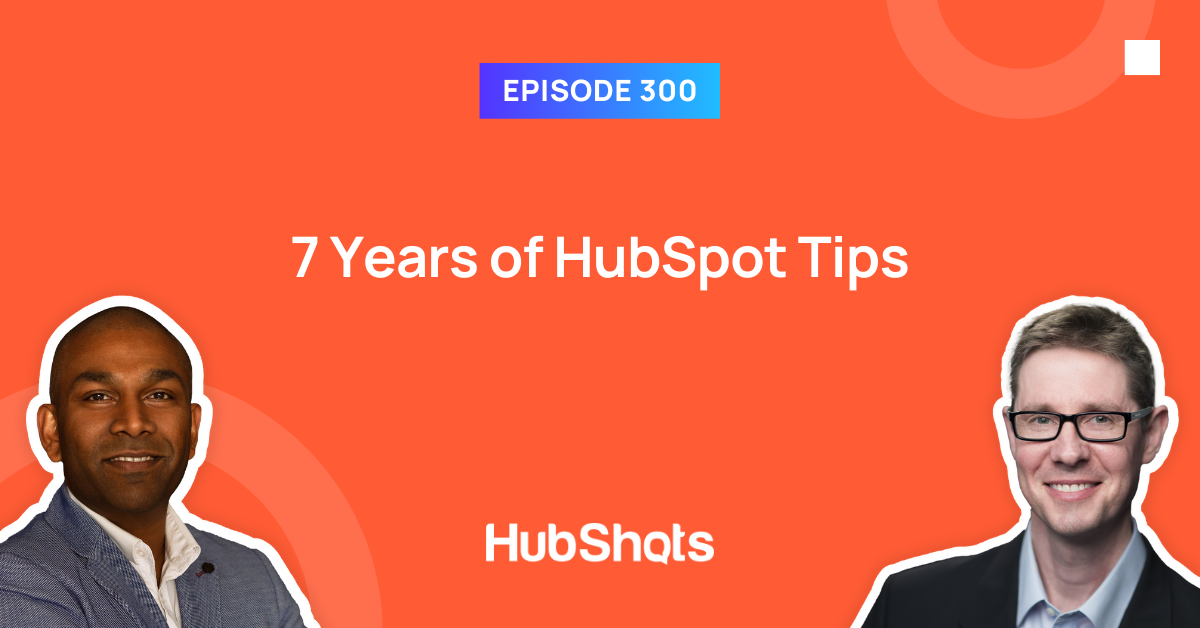
Welcome to HubShots Episode 300: 7 Years of HubSpot Tips This edition we dive into: 7 years and 300 episodes HubSpot Email List columns layout ...
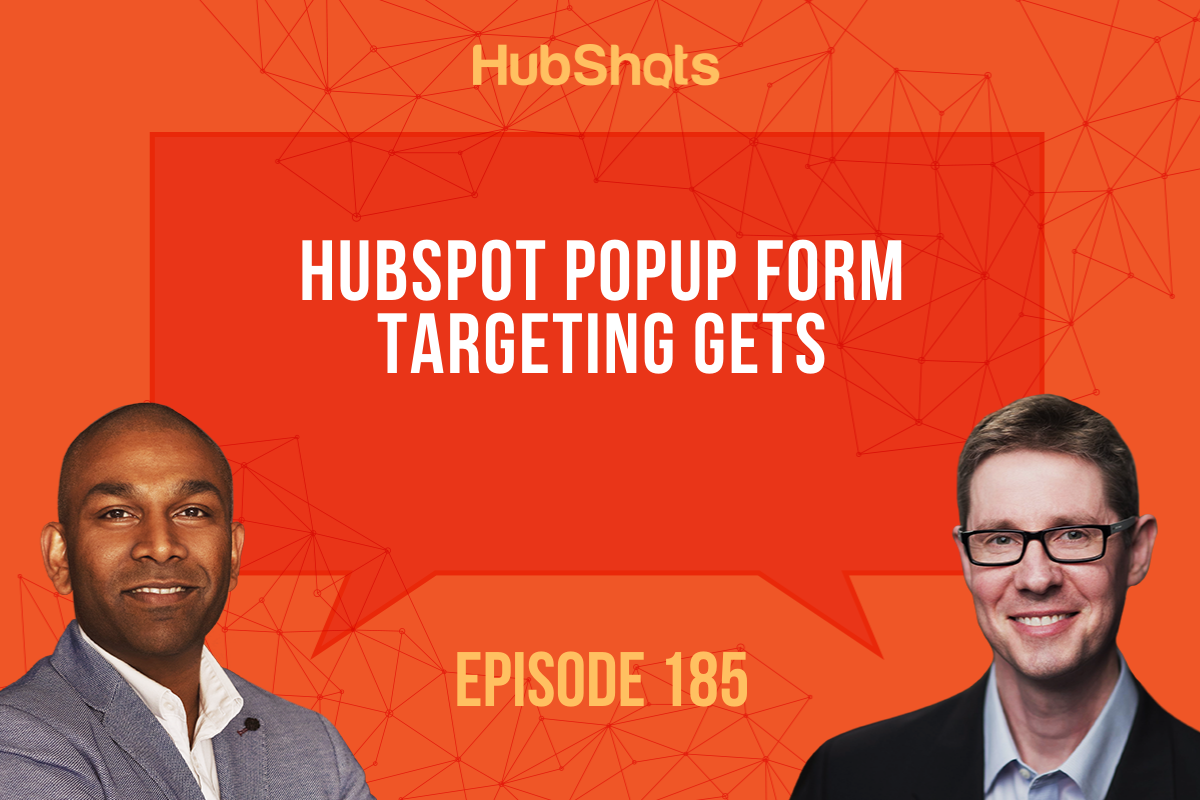
Welcome to HubShots - APAC's number 1 HubSpot focussed podcast - where we discuss HubSpot tips & tricks, new features, and strategies for growing...
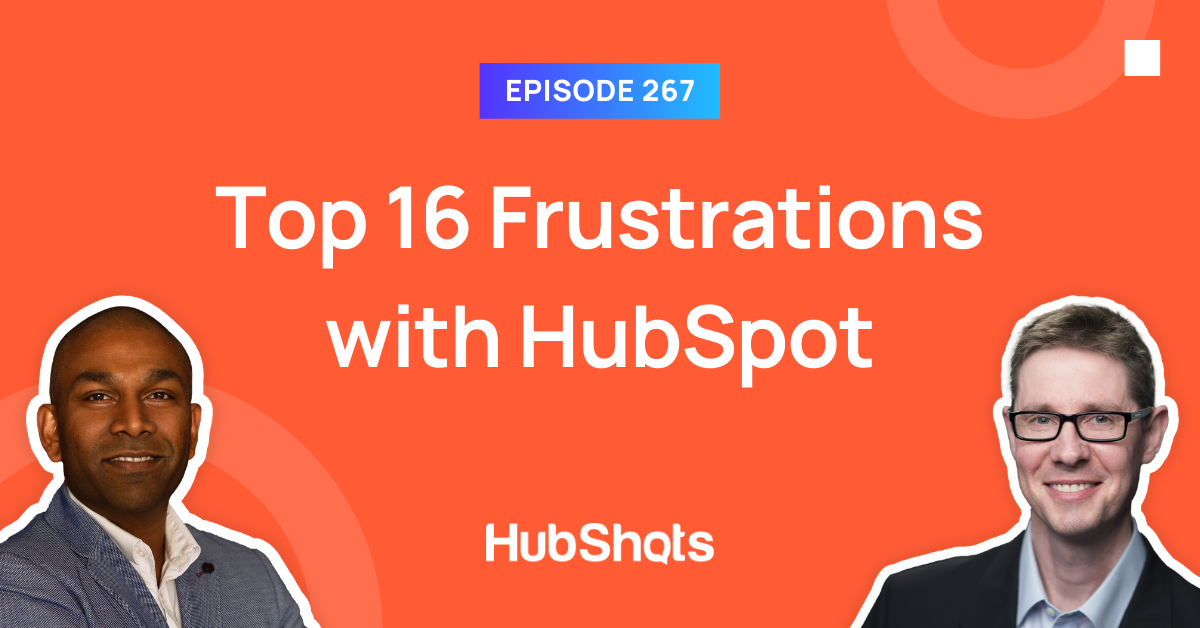
Welcome to HubShots Episode 267:Top 16 Frustrations with HubSpot This edition we dive into: The top frustrations we hear from customers about using...
